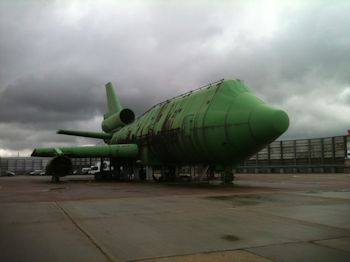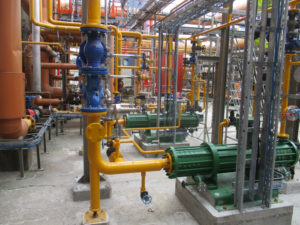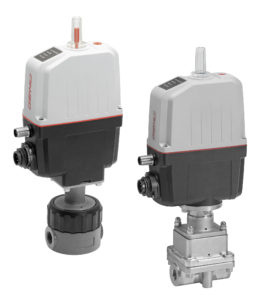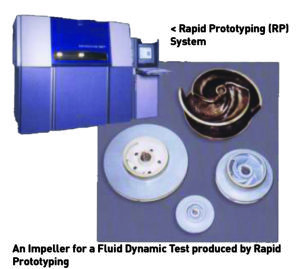Deluge Pumps for Heathrow Airport Aircraft Fire Training Fuselage
At London’s Heathrow Airport, training fire crews is an almost constant activity, which is why it has a purpose-designed fire training rig constructed from steel to the same size as a Boeing 747.

The purpose-designed fire training rig constructed from steel to the same size as a Boeing 747.
Packed full of safety sensor devices it is a pretty expensive piece of kit with a replacement price tag of around £10 million. So when it is set on fire during training exercises, putting out the fire has to be fast and effective in order to ensure safety for the fire crews undergoing training and preserving the integrity and fabric of the rig.
In the interests of ensuring optimum performance and attaining greater energy efficiency, BAA Heathrow has recently replaced its existing deluge pump system with a state-of-the-art pump system designed and fabricated by AxFlow Windsor. The new unit comprises four Lowara 92SV3/2AG185T Vertical multistage pumps with 18.5 kW motors. The pumps have been sized for a duty of 1746lts/min @ 46.2m/hd giving a total flow rate of 5,238lts/min with three pumps running one being used as a spare. AxFlow Windsor selected these pumps due to their high efficiency and compact footprint as they had to fit the four pumps into the space occupied by the one (albeit larger) pump.
“The existing pumping arrangement was using one pump and a 110kw motor,” reports Richard Maher at AxFlow Windsor. “This ran at full speed regardless of the demand on the system, which could vary between filling the fire tenders’ on-board tanks to a full deluge of the training rig itself. The new system uses one 18.5kw pump when filling the tenders and three 18.5kw pumps to fully cool the rig, so there is a considerable saving in power consumption. Also the pumps are controlled by ABB ACH550 inverters so the running speed can be set to match the duty exactly.”
Fire training is held on a regular basis with each session ranging between one and two hours. The rig is set on fire internally and externally with LPG, and the fires last for around three minutes. The purpose of the deluge pumps is to cool the rig and to control the overhead water fill on the fire training ground. The deluge starts before the scenario and works through the period of the fire and then for about one minute after the fire has stopped.
Ian Jolly, BAA Water Services, says that when the full test of the new pump system was carried out at the fire training rig all the valves were opened to produce a full deluge and the pumps succeeded in sending water to all parts of the rig. “Under test the pumps were slowly ramped down from full speed to try and see at which point the head could not be achieved,” reports Ian Jolly. “With three pumps running the deluge was achieved, but with two the head was not reached. This gave a redundancy of 25% and still met the requirements of the rig. With all four pumps running the filling boom was also opened. The flow was maintained to the rig with the required head, enabling a tender to be filled at the same time as the rig was being used. With three pumps running the boom robbed the head to the rig.”
For the test, each pump was left running at a full speed of 50Hz and at this speed each pump was pulling 33 Amps at 17.5kW. In total the pumps are pulling 132 Amps, 70 kW. Limiting the current keeps the pumps below the 200 Amp threshold of the supply fuses, with each pump set at 48 Amps.
The current draw is just over half of the previous installation with the power reduced by the same factor. The use of variable speed drives mean that the pumps pull no more than the full load current on start up. The redundancy of 25% means that servicing or a breakdown can be attended to without loss of service to the facility. The redundancy also means that the rig and boom can be used in conjunction with each other.
“In summary the water supply system for the rig is now fit for purpose, providing greater flexibility, maintainability and power reductions,” says Ian Jolly. “Many thanks to AxFlow for another quality installation. All in all, an excellent result all round.”
Source: AxFlow Group





